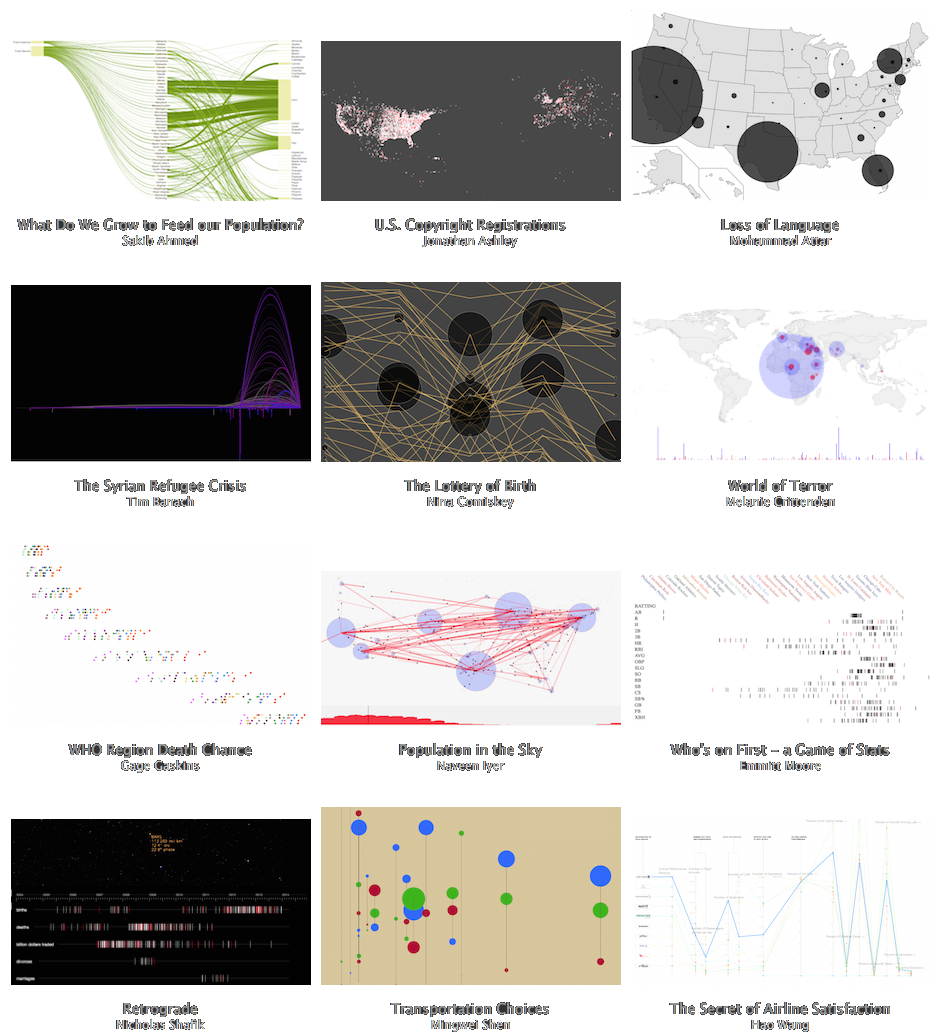data visualization |
|||
| Visualization Challenge: Choose an issue to explore visually, and build it |
|||
|
Abstract: Throughout the course we have explored the theory and practice of visual information structures and knowledge graphics, along with sets of issues and problems they are trying to wrestle with — in short, both process and problem. The graphic solutions and techniques that we have studied are all attempts to explain or see into some set of relationships or flows that are not easily understood or parsed. We've looked at ways to make complex associations, patterns, and massive data readable through justaposition, scale, context, and more.
The Semester Challenge: Now, and for the remainder of the semester, you are tasked to apply the theory and practice of Data Visualization to a targeted problem of your own interest and data set. For consistency of a theme for the class, there are two topical avenues from which to choose:
Each of you will choose an aspect, area, or issue within this very large and complex system, seek out and find data about it, explore its complexities through visual data analysis, and develop a dynamic visual information product. Your topic could be any aspect and any scale of the issues surrounding this arena — it could be global; it could be minutely personal; it could be about countries, states, cities and communities in particular; it could be about individual agency and personal choice; it could be about massive trends; it could be about regional or global economics or markets; it could be about politics and policy — local, regional, or global. Your basis of study could be centered on resources and costs (there are many versions of this, not just monetary). It could (and perhaps should) involve political, economic, social, or policy challenges. Whatever your argument, consider it from multiple directions and multiple scales. Your visual exploration should include the system of inputs, decisions, challenges, and variable impacts of all of these, and will likely include each along a range of personal, social, environmental, economic and political scales. Your exploration may include both micro and macro level issues. It should include not just the "whats" but also the "hows" and "whys" of the system. These visualizations should go well beyond broad-stroke systems diagrams or kitchy pop-graphics, into something that articulates not just the presence of a conflicted system, but some of the details and specific machinations of that system. Identify an issue or interrelated set of issues, and develop a technique to see into it - to gain insight. Use the techniques that we've been studying. Look at examples of how others have attacked these problems. Your issue should be something you care about and are interested in, and it should be something fun! Final Products:
There are three stages to this assignment, over the remainder of the semester:
|
|||
